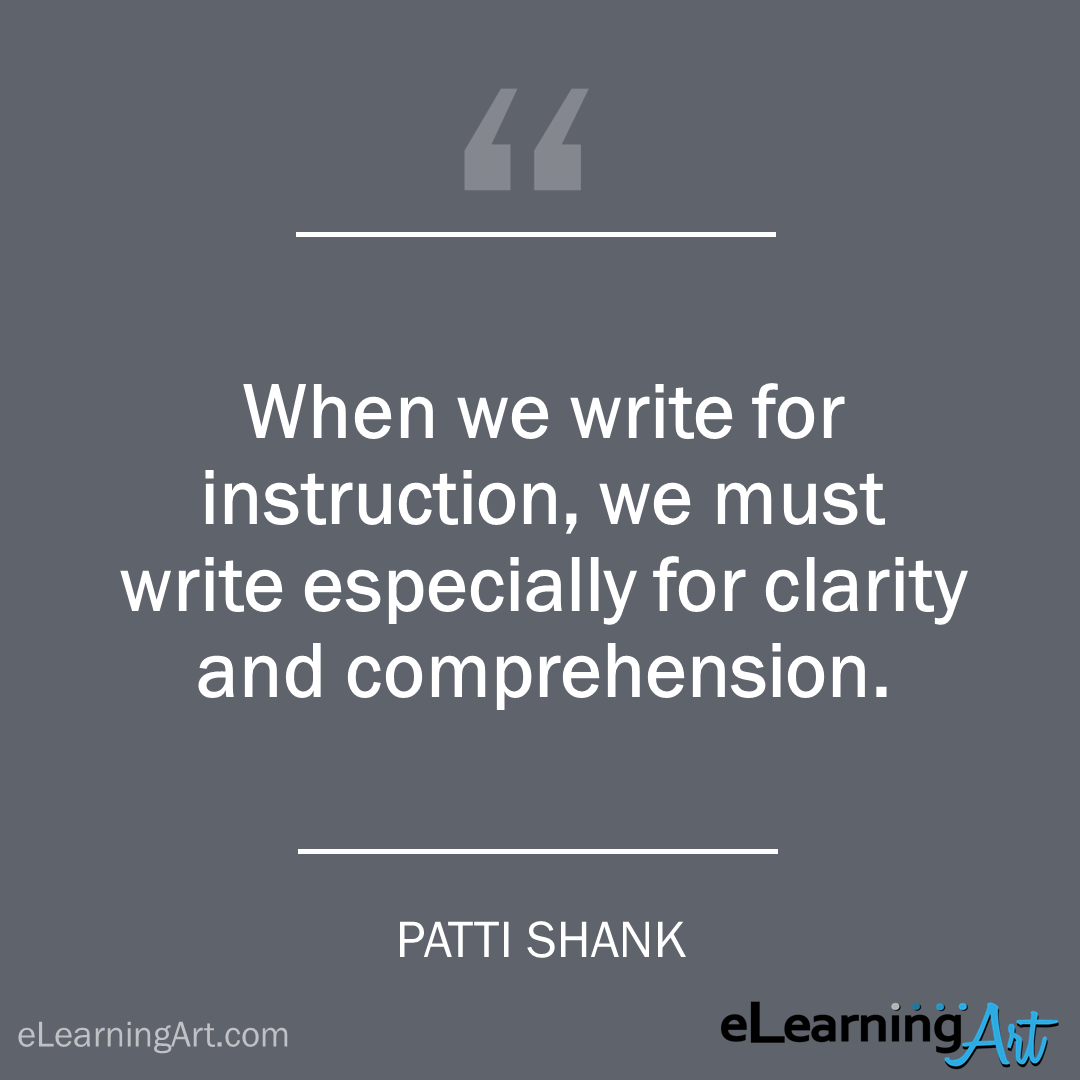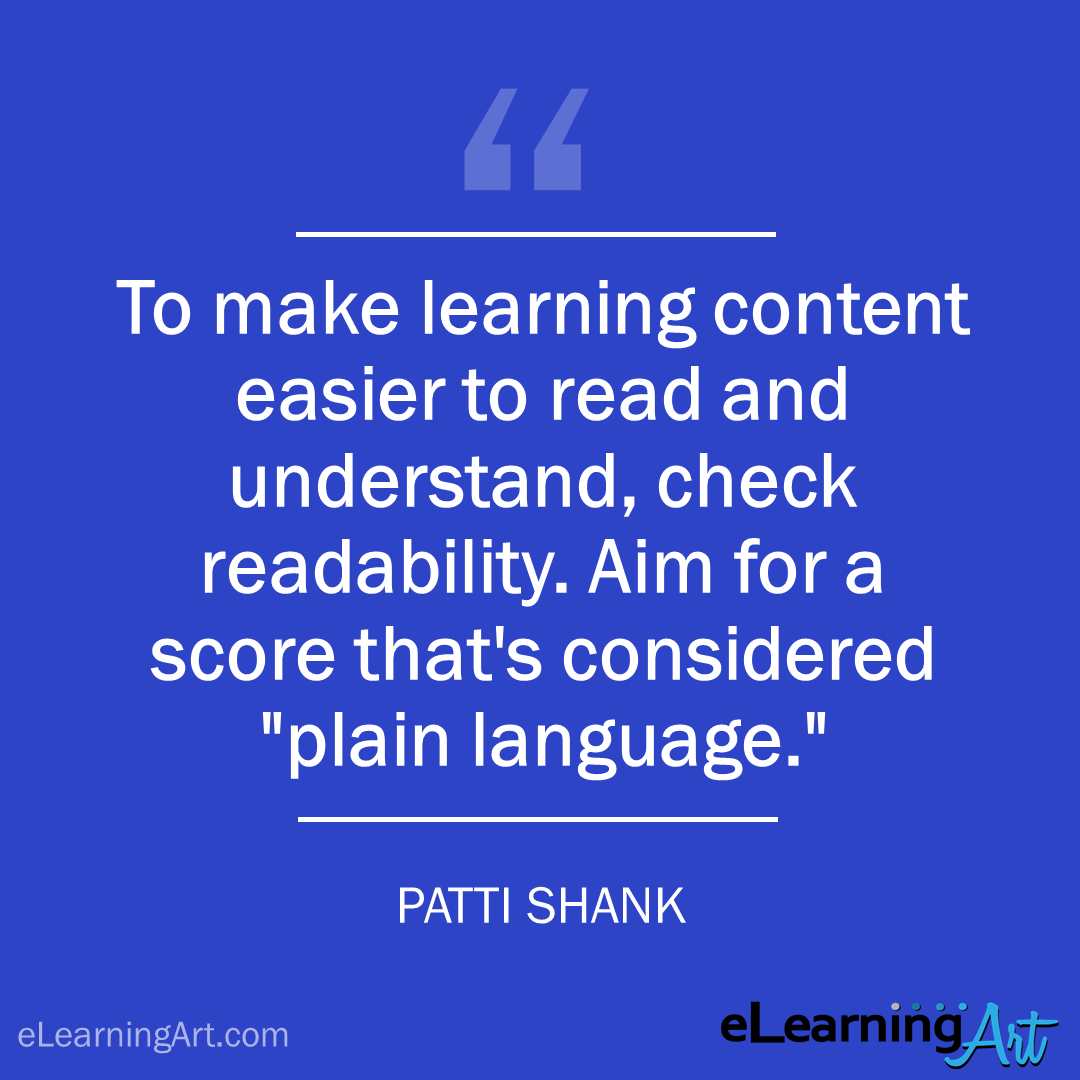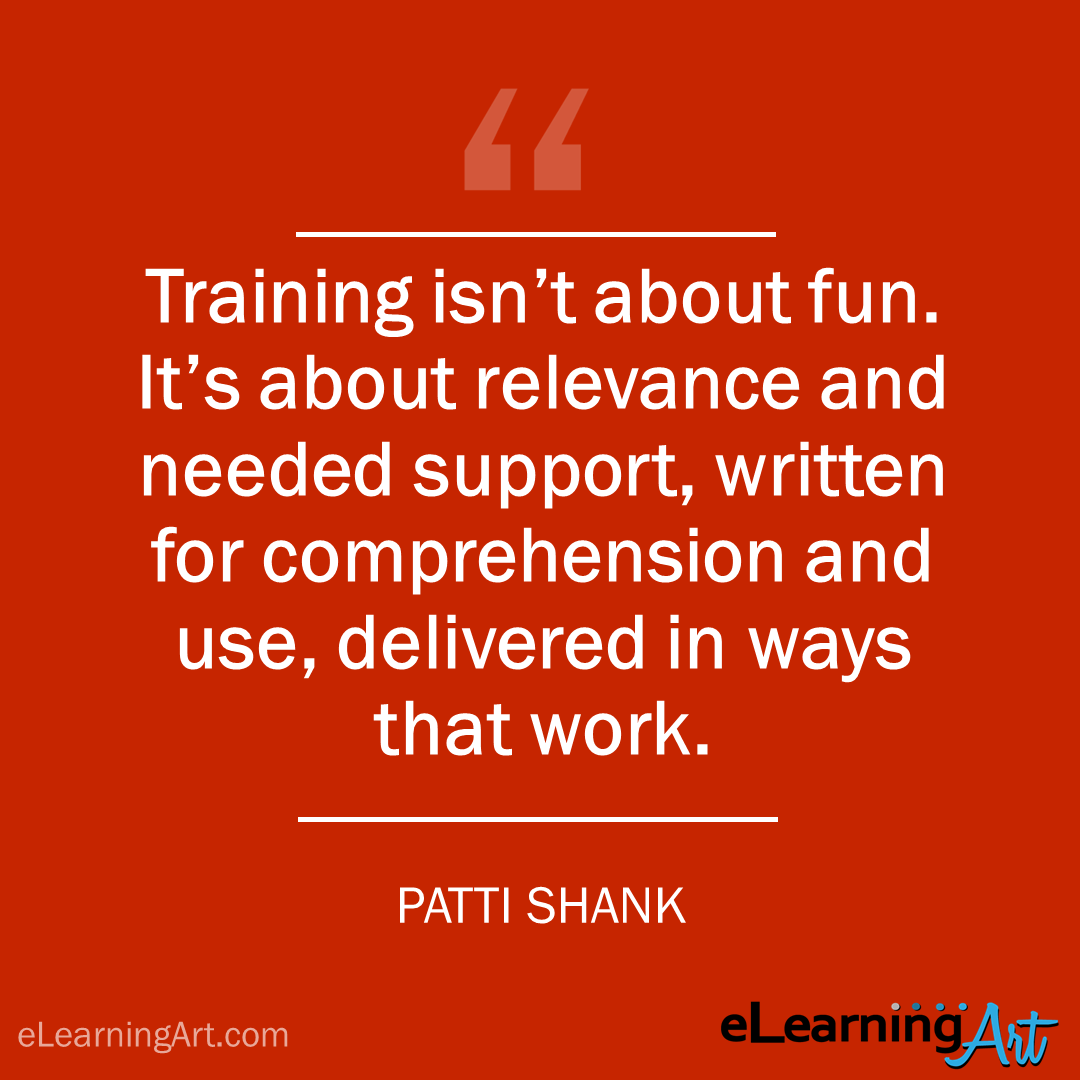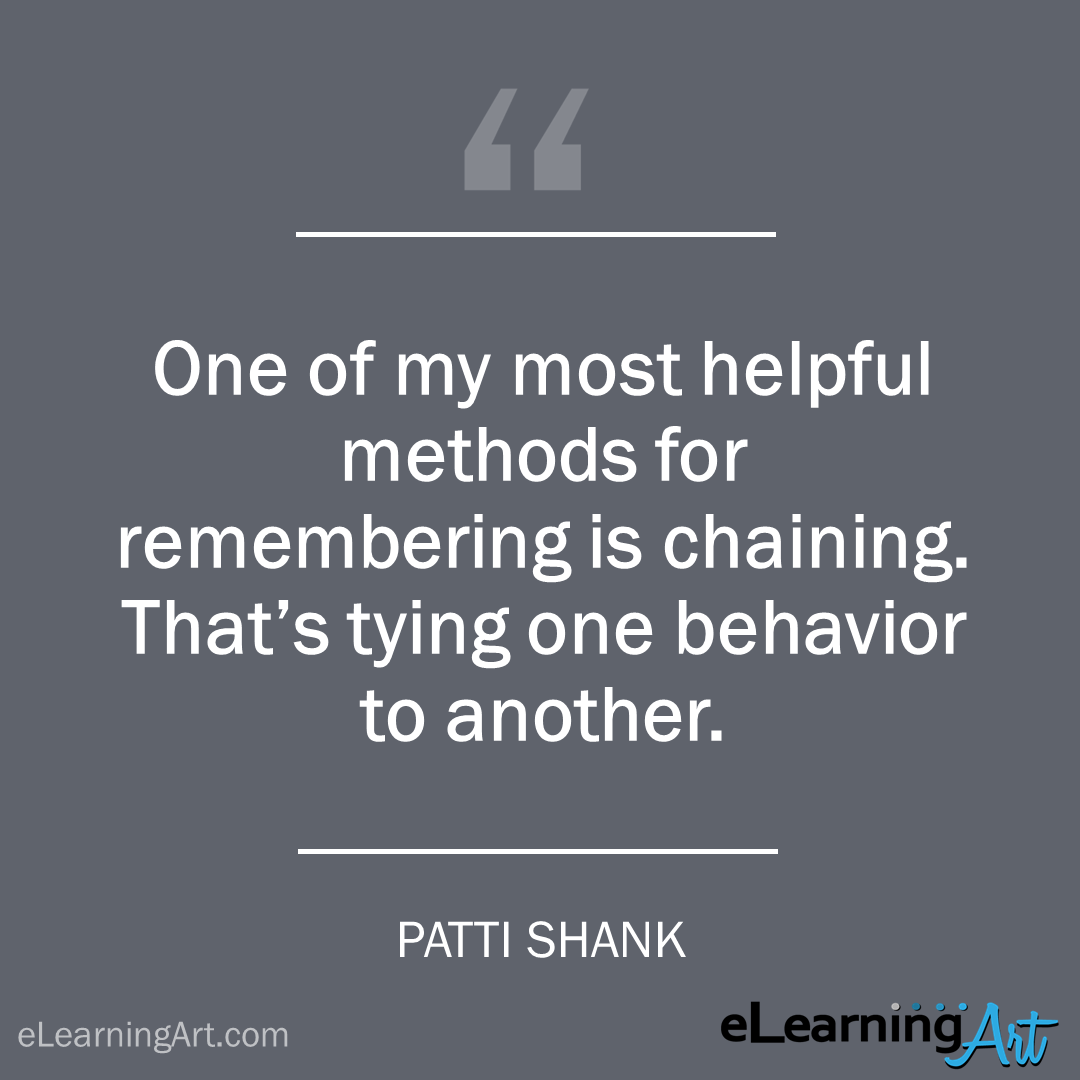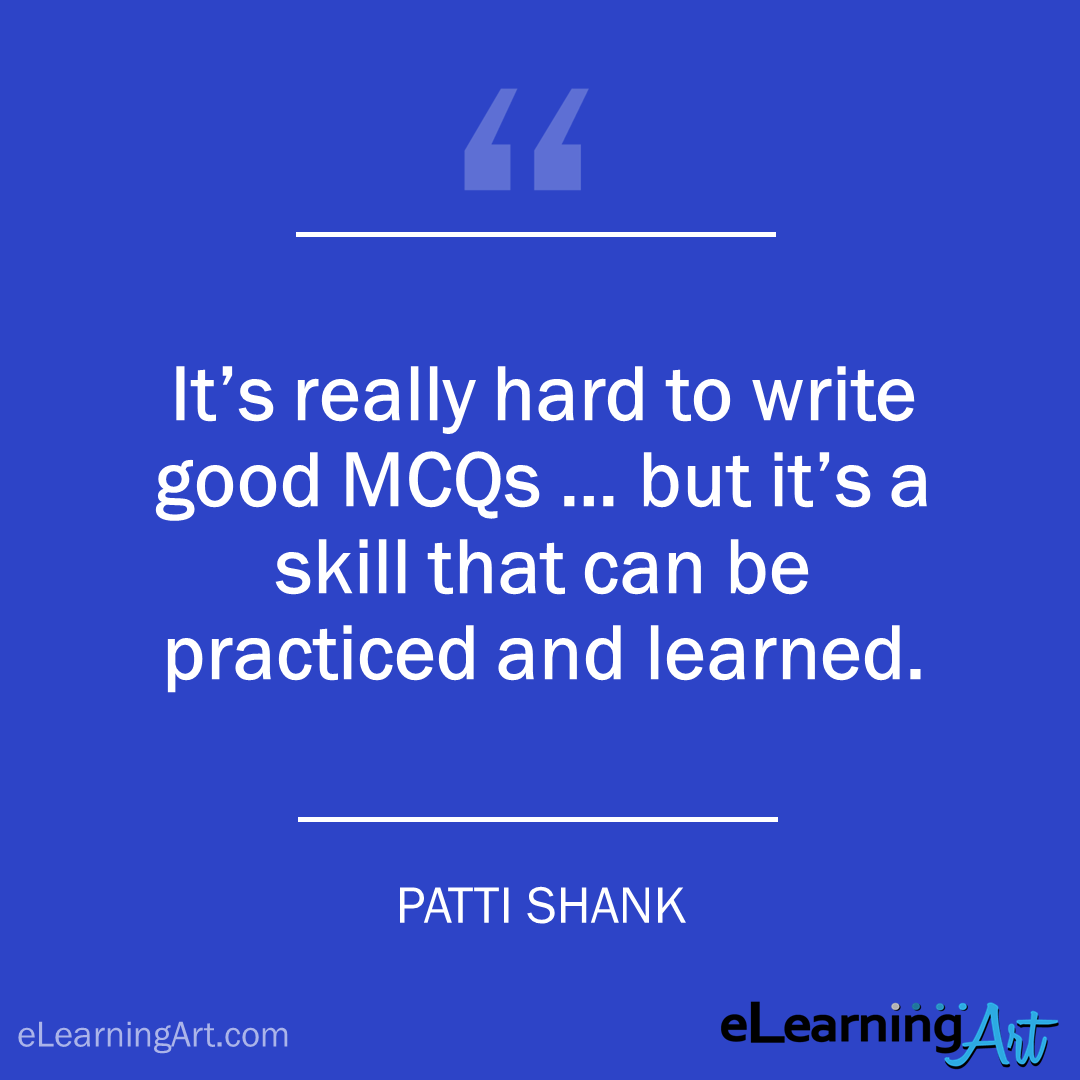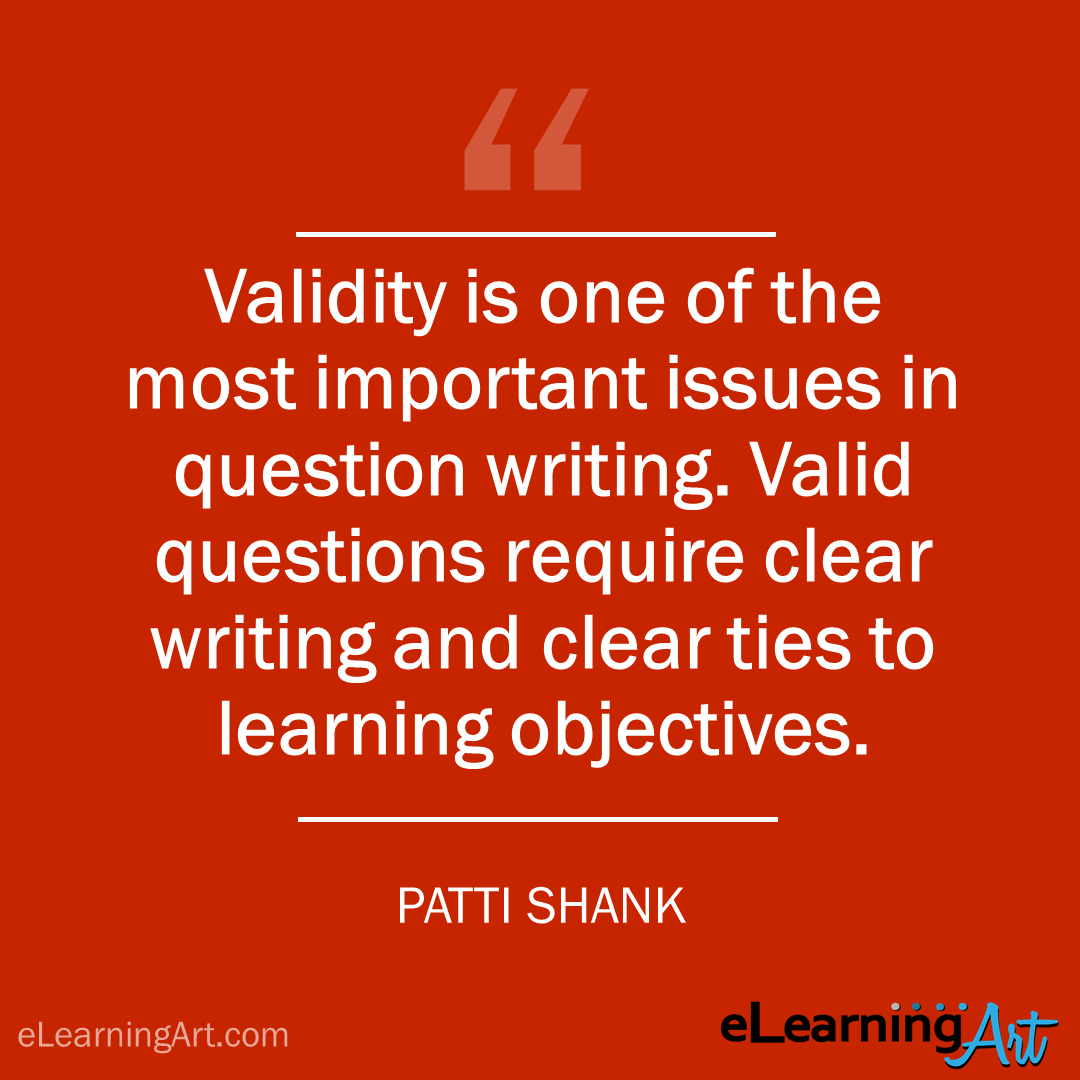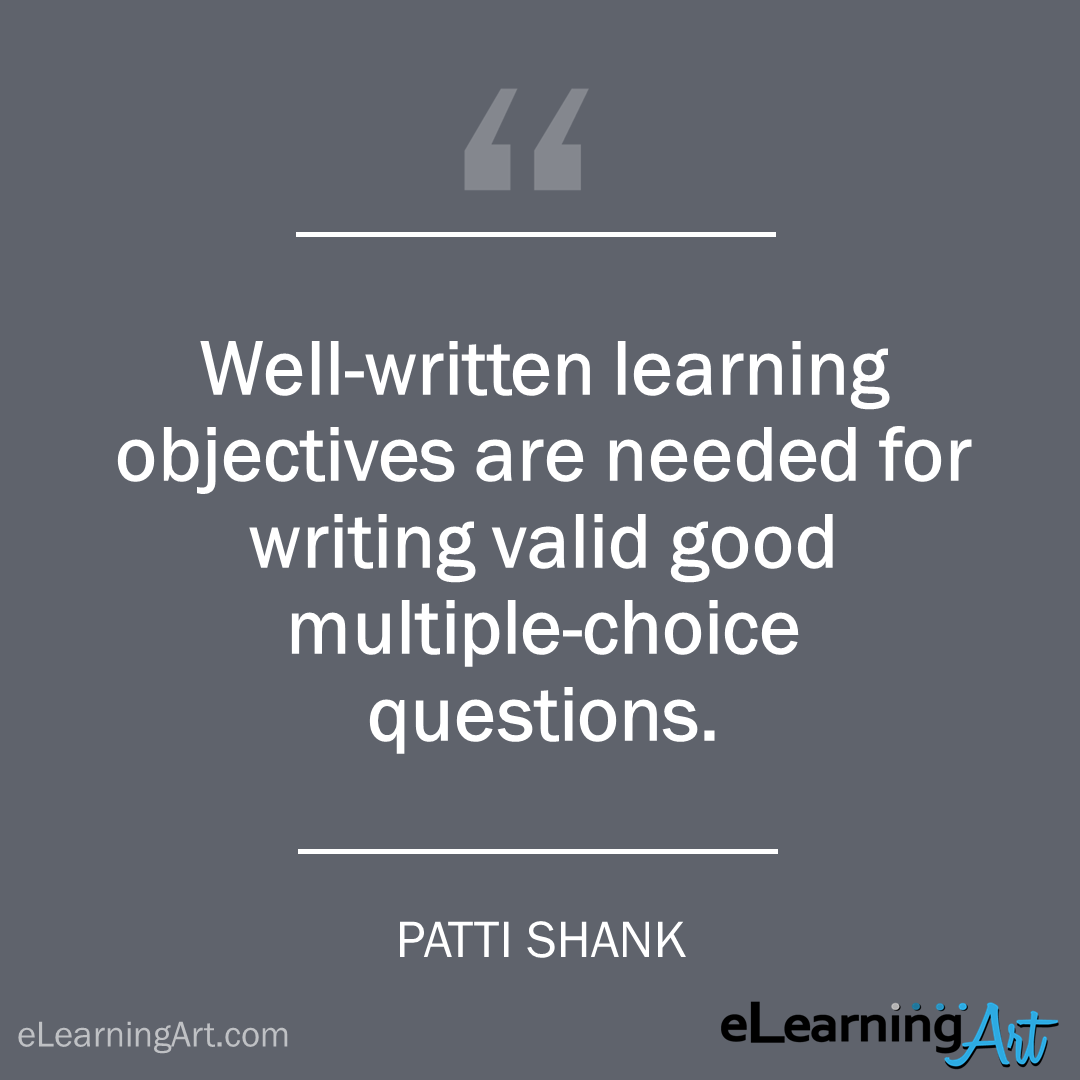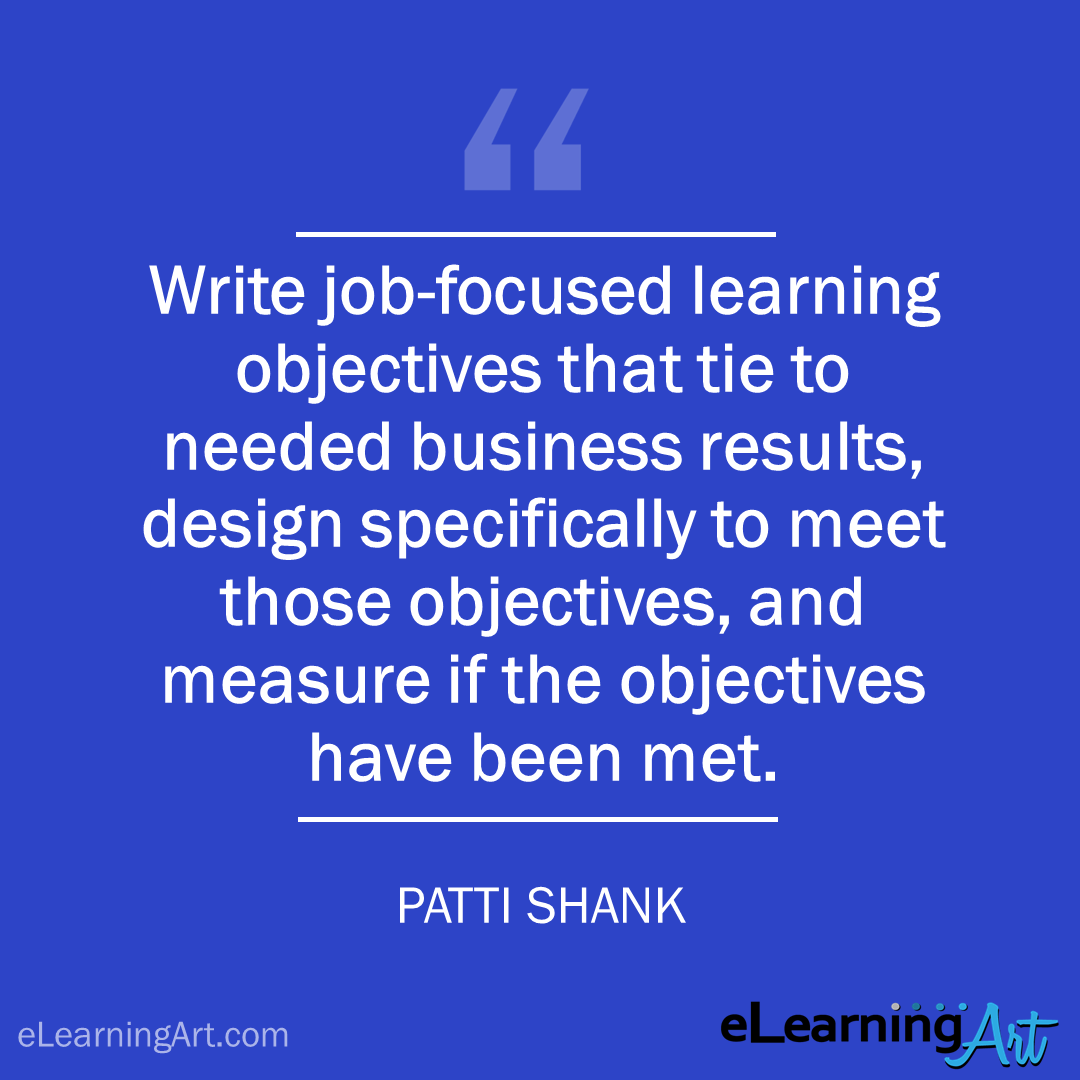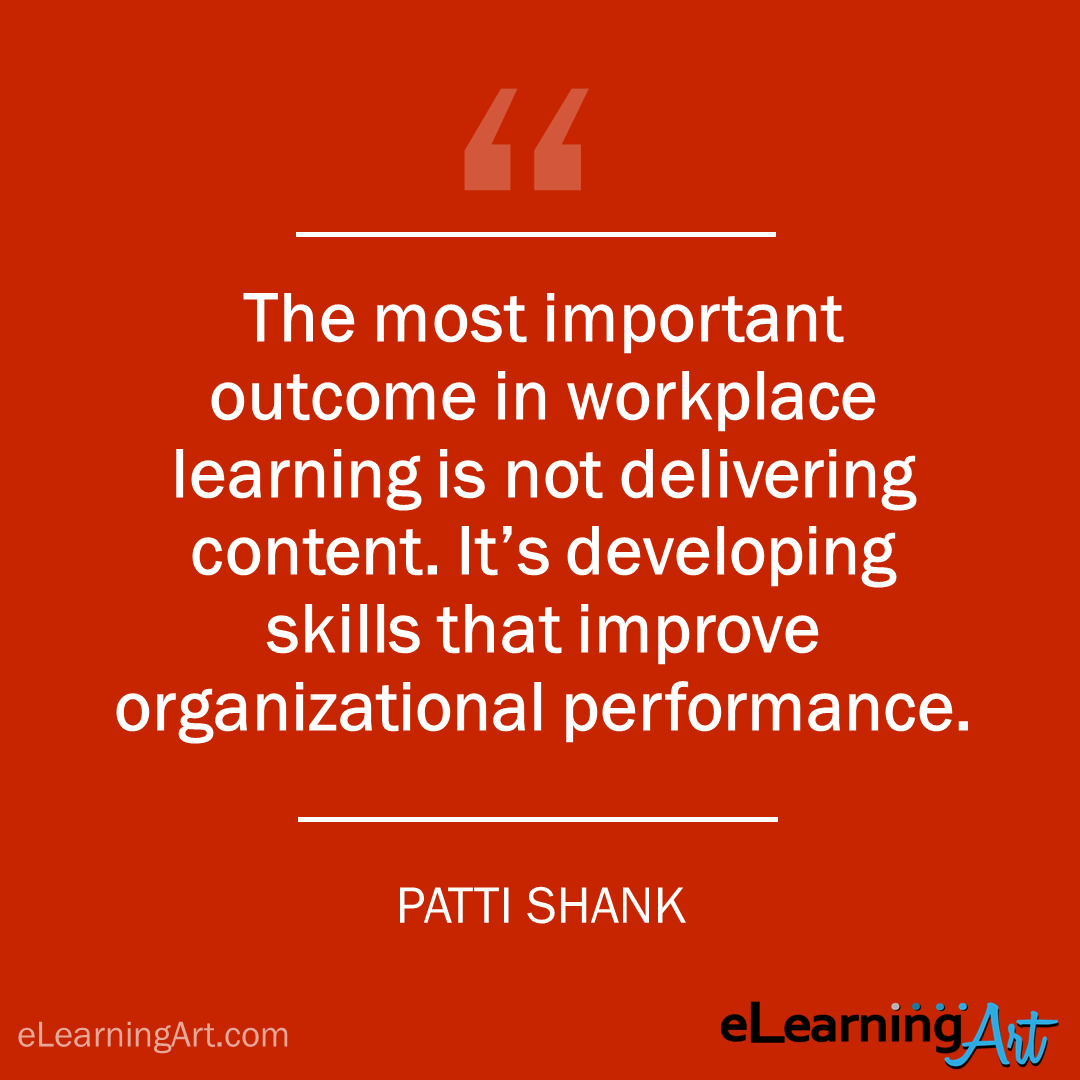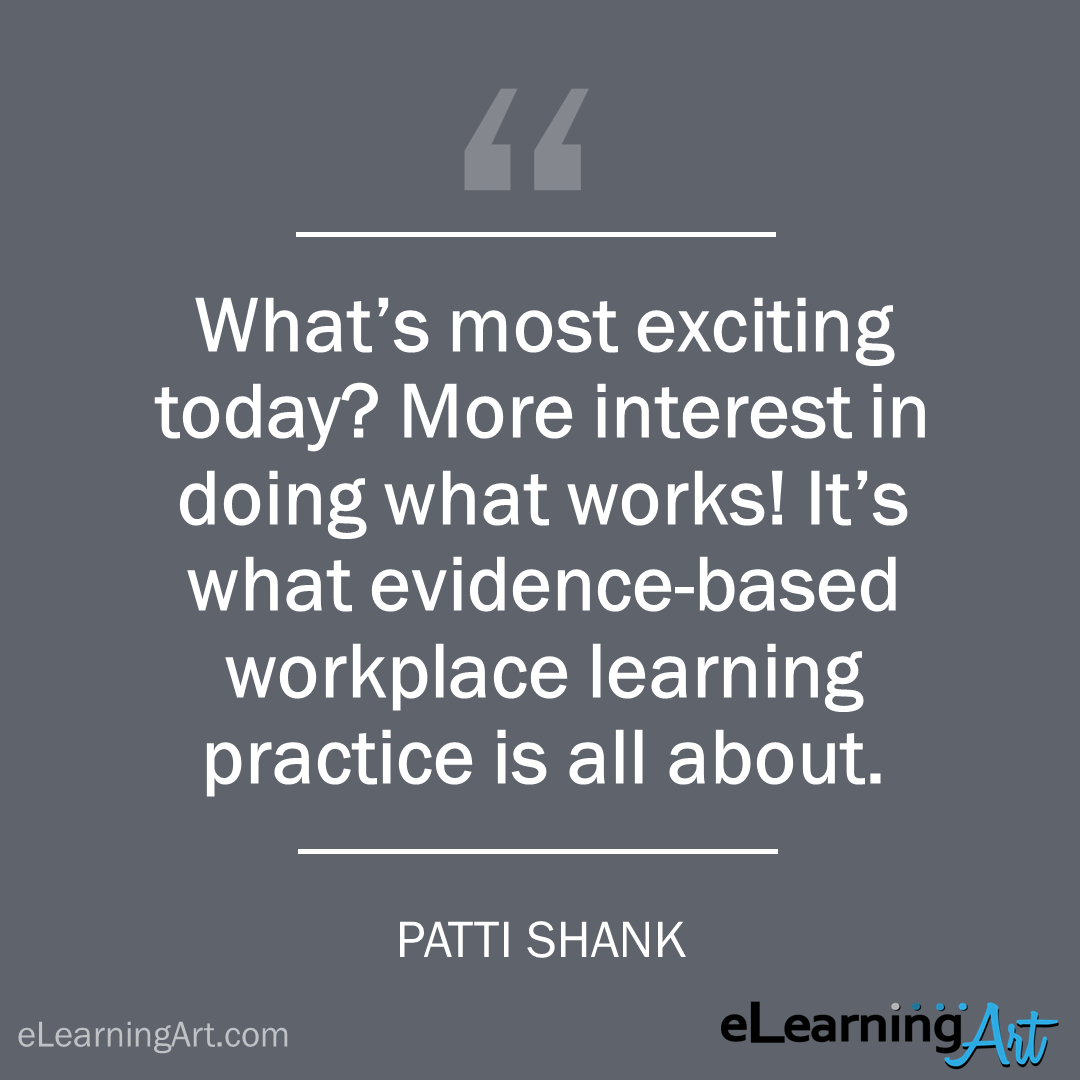 When we’re building workplace learning, we want to make sure it delivers on the promise of behavioral change. And to get there, we need to follow evidence-based practices.
When we’re building workplace learning, we want to make sure it delivers on the promise of behavioral change. And to get there, we need to follow evidence-based practices.
Problem is, who has time to source, study, and sort out academic research in cognitive science, instructional theory, and education?
Luckily, we have Patti Shank!
Patti has committed herself to researching, understanding, and clarifying the science behind deeper learning. Her books and live-online courses help everyday instructional designers “do what works,” and do it more easily.
Because evidence-based practices are so important, I asked Patti to share her best insights and I’m really excited to pass these on to you here.
Read on!
1. What evidence-based tactic could an instructional designer easily implement?

Patti: The evidence-based practice that the average learning practitioner must use every day is to design to minimize unnecessary cognitive load.
Cognitive load is the amount of mental effort required. Learning often uses a lot. We need to make sure we don’t overload people with unnecessary sources of cognitive load as that could make it difficult or impossible to learn. Here are a few common sources of unnecessary cognitive load in instruction:
- Images that are decorative and unnecessary
- Content that is provided “just in case”
- Content that requires splitting attention between two sources of information in order to understand them (for example, a diagram and a written explanation of the diagram)
- Media that requires too much mental effort to understand
2. What kind of writing voice should we use in our courses?
Patti: Research says to write conversationally, writing for each person as an individual. Write like you’re writing to Susie or Tomas, not like you’re writing to the IT department or the entire organization. Conversational writing improves attention and remembering.
3. What’s the biggest mistake people make when writing a training program?
Patti: There are many mistakes people make. One of the most obvious is that the content isn’t written specifically for instruction. It’s written generically. This makes it harder to understand and use. When we write for instruction, we must write especially for clarity and comprehension. And to reduce unnecessary cognitive load. I’ve written an entire book on this topic and am developing online courses to help people improve their skills. It’s important.
4. What writing strategies should they employ instead?
Patti: Here’s one that everyone can fix quickly. To make learning content easier to read and understand, check readability and aim for a score that’s considered “plain language.” Readability scores measure how easy something is to read and understand, measuring sentence length, number of syllables, and word familiarity in their calculations. You can learn why readability is so important here, and check the U.S. government’s plain language site, too.
Note: Not sure how to check the readability score for your Word document? It’s easy. Just follow the steps offered by Microsoft here.
5. How do we create training that will stick with learners for the long term?
Patti: Research shows that relevancy is one of the best indicators of potential for remembering and application.
If it’s not relevant to their needs, it’s not going to stick. First, the viewer is unlikely to pay significant (or any) attention. Can you remember the junk mail you got last week? Probably not, unless it was annoying or otherwise caused an emotional response. That’s because you paid little or no attention. Without attention and then deep processing, most gets lost. Our minds have a lot to do and we are very good at tuning things out — we have to be!
The implication is that we need to understand what is relevant to the people we are building training for:
- We need to know their jobs and how they do them.
- We need to understand their problems.
It’s not about fun. It’s about relevance and needed support, written for comprehension and use, delivered in ways that work.
6. Do you have any tips that you use to help yourself remember things?
Patti: One of my most helpful methods for remembering to do the things I want to do every day (like reading, exercising, etc.) is chaining. That’s tying one behavior to another.
James Clear calls it habit stacking and you can read about it here. This works! Many of my good habits stick because I do this. (I started as a health educator and the research on health behavior change is near and dear to my heart.)
For remembering meetings and to-dos, I use a detailed planner. And notifications. And anything else that can keep me on track. Sometimes cognitive load takes over and I forget anyway.
7. Multiple choice questions in eLearning — love em or hate em?
Patti: I teach workplace learning practitioners how to write them so I think it’s a key skill. We regularly need to assess understanding (formative assessment) so we can fix understanding — misunderstandings damage further learning. Multiple-choice questions are an efficient method for doing this BUT they have to be written well. In fact MCQs can help people remember what they learned. Fact is, people are going to use them because they are efficient.
The problems with multiple-choice questions (like the problems with PowerPoint) are with how they are designed. Research shows that it’s really hard to write good MCQs … but it’s a skill that can be practiced and learned. And if you are going to use them, they have to be well-written or you’re causing problems. (See next question.)
We cannot assess all skills with multiple-choice questions but we can assess many. They’re efficient and when well-written, can do a good job of helping you find problems with the instruction and analyzing how well the learning objectives were met. These are two things we need to do.
8. What’s wrong with most multiple choice questions?
The biggest problem with MCQ assessments is that many are invalid. In other words, they don’t measure what they are supposed to measure. Validity is one of the most important issues when writing multiple-choice assessments. Valid questions require clear writing and clear ties to learning objectives. When they are valid, questions can measure deeper levels of learning and create deeper processing, which improves ability to apply.

9. What’s your opinion on learning objectives?
Patti: What a timely question as I’m teaching a multiple-choice-writing course online right now. (Check out course information and sign up to hear about the next session here.)
Very simply, well-written learning objectives are needed for writing valid good multiple-choice questions. Research tells us that a variety of benefits can result from well-written learning objectives. Good learning objectives can:
- Focus participant efforts (Where am I headed? How will I know if I get there?)
- Direct instructional content, activities, and tactics (What do we need to do to help participants meet these objectives?)
- Guide assessments (How will we know if the learning objectives have been met?)
- Guide continuous improvement (What didn’t work as planned? How can we fix it?)
In workplace learning, learning objectives describe specific, measurable, job task behaviors. They tell us what people need to be able to do. How do we develop the right instruction without that information? I could write a short course on writing well-written objectives and probably will.
10. How do we get closer to assessments tracking back to on-the-job performance?
Patti: By writing job-focused learning objectives (see the first question) that tie to needed business results, designing [the program] specifically to meet those objectives, and measuring if the objectives have been met. It’s a system, and this is how we get the results we need.
11. What’s one thing you wish every workplace learning builder would stop doing right away?
Patti: Thinking their main/most important outcome is content. It’s not. Their main/most important outcome is developing skills that improve organizational performance.
12. What’s the most exciting thing you see happening in the world of workplace learning?
Patti: In the last few years I’ve seen faaaaaar more interest in doing what works (evidence-based workplace learning practice). People are questioning the fads and folklore (learning styles, digital natives, etc.). I’m not sure that many people would have been interested in my evidence-based books ten years ago. They are now.
Another exciting thing is the sharing in social media. I’ve learned a lot from people I probably would not have met on Twitter, especially. I’m @pattishank for anyone who wants to share with me. I’d be delighted!
A special thanks to Patti for sharing these great eLearning writing tips!
If you like Patti’s tips above, you’ll love her courses and books.


